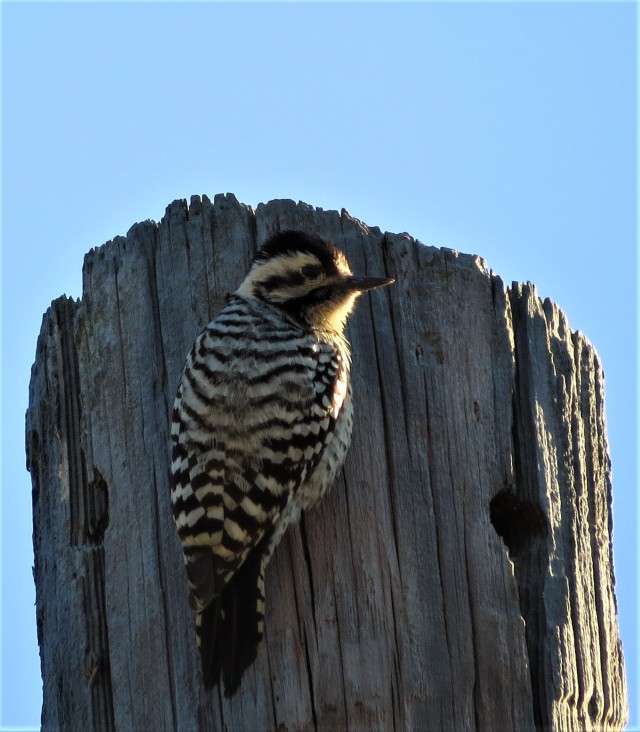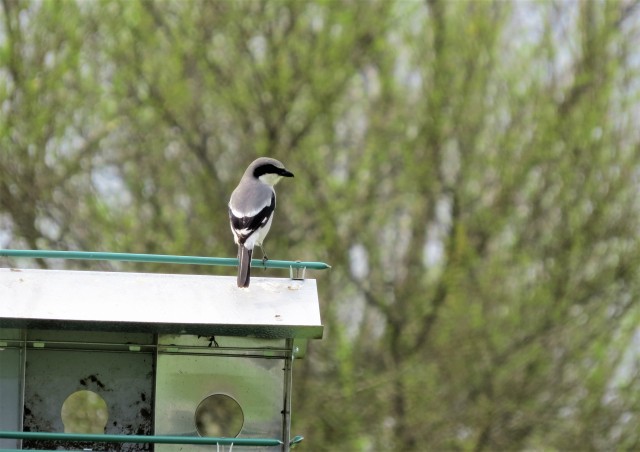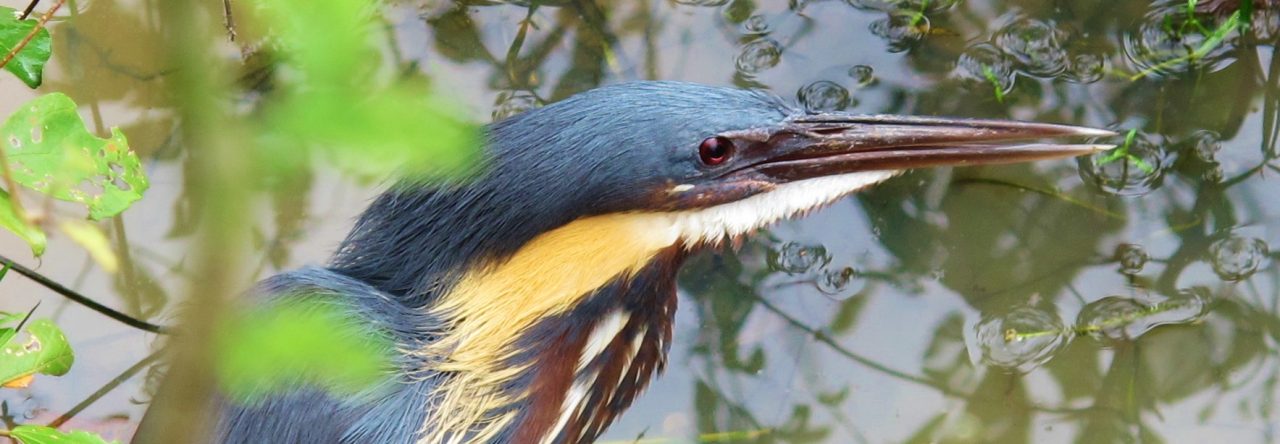I set myself an ambitious target of 5 lifers from this weekend, but despite plenty of effort managed to see none of them at all. However, in between the numerous moments of frustration there was still lots to enjoy, notably the first field outing for my new camera. Last week, I finally took the plunge and invested a small amount of money in a used Canon SX50HS “superzoom”, which has been receiving glowing reports from birders since it came onto the market in 2012. My first weekend with it was somewhat experimental, but resulted in a few pleasing photos – and of course a lot of out-of-focus dross!

Saturday was one of those picture-perfect days that seem to be happening a lot during this non-winter we’ve been experiencing in Texas: crystal clear air, mostly blue skies with a little high cloud, and a cool start to the day but warming up to an afternoon high of 84F (29C).
By first light I was already at the edge of the Balcones Canyonlands reserve in the “hill country” outside Austin, with my target lifers in this area being Black-throated Sparrow, Rufous-crowned Sparrow, and Canyon Towhee – all of which are no doubt fairly common further west, but are at the far eastern edge of their range here. It seemed from my reading that these kinds of species prefer arid, rocky slopes and canyons, and my main problem – as often seems to be the case in Texas – was actually getting to this habitat in an area where so little of the land is accessible to the public.

Nonetheless, I had a most enjoyable start at the Doeskin Ranch, one spot to which the public have been granted access. I didn’t see any obvious habitat for my target birds, but a couple of hours here did produce 10 sparrow species within just a 300-yard radius of the parking lot (Grasshopper, Le Conte’s, Lark, Fox, Song, Lincoln’s, White-throated, Vesper, Field, and Savannah). I even managed record shots of both of the Ammodramus sparrow species on this list – surely it is a good omen to get these tricky skulkers on my “photographed” list on my very first morning with my new camera!

If getting the sparrows on camera is a good omen, the karma must be coming at a later date because my luck deserted me for the remainder of the weekend. Several more hours in different areas of the canyonlands turned up just two Dark-eyed Juncos, a flock of eight Lark Sparrows, and a pair of Woodhouse’s Scrub-Jays of note – and they wouldn’t even do me the courtesy of getting in front of my camera lens.
With the temperature rising but the winds still nice and light, I drove an hour east to try yet again for the elusive flock of McCown’s Longspurs near Granger Lake. Finding these birds is becoming something of an obsession. A flock of over 100 McCown’s Longspurs – plus another 100 unidentified longspurs, probably all McCown’s but conceivably also including Lapland and Chestnut-collared – had been seen the previous day along road 378, and with such good viewing conditions today I really did fancy my chances.
A distant flock of small birds disappointingly turned out to be American Pipits on closer inspection, but otherwise there was little of interest to be seen, with a faraway and very un-birdlike Coyote loping across a bare earth field being the highlight. Another birder gently informed me that I was probably a bit too hung up on these McCown’s Longspurs, and that I should consider quitting – but I reckon I have one more Granger Lake session in me before the winter is over. Satisfaction is doubled when one finally finds a bird one has looked for so hard.

Dip number 5 was perhaps even harder to take than my ongoing failure with the longspurs. I spent (wasted?) most of a perfectly decent Sunday hanging around in the woods beside a small creek in a San Antonio park, the favored location of the male Black-throated Blue Warbler which had been showing to all-comers literally every single day since the last time I dipped it here two weeks ago. But it seems it chose Saturday night to disappear, with no sightings since then. Whether it departed of its own volition or was murdered, we will never know …. although my suspicions were raised when this guy turned up at the exact spot favored by the warbler:

Around lunchtime I took a half-time break from Lions Park and headed to nearby Mitchell Lake for some light relief, which came in the form of lots of photographic opportunities for common birds around the visitor center:



It’s hard to know what to make of last weekend. I got some satisfying photos but all I know at this point is that I’m getting fed up with long drives “out west” and coming back with little in the way of new birds to show for it. So where to go on Saturday? The previous weekend yielded Palm Warbler and Clapper Rail in Galveston, so maybe I’ll stay relatively local. On the other hand, there is also a Henslow’s Sparrow to go for at Big Thicket National Park, towards the Louisiana border. I guess I will decide how I feel on Friday!
2017 World Year List: 291





